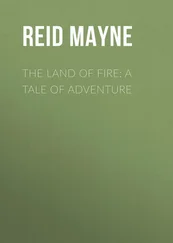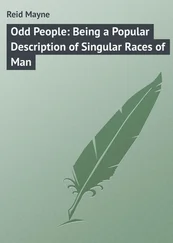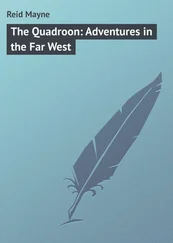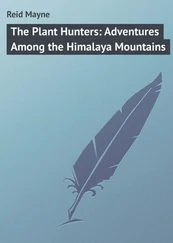Mayne Reid - Popular Adventure Tales
Здесь есть возможность читать онлайн «Mayne Reid - Popular Adventure Tales» — ознакомительный отрывок электронной книги совершенно бесплатно, а после прочтения отрывка купить полную версию. В некоторых случаях можно слушать аудио, скачать через торрент в формате fb2 и присутствует краткое содержание. Жанр: literature_19, foreign_antique, foreign_prose, foreign_children, на английском языке. Описание произведения, (предисловие) а так же отзывы посетителей доступны на портале библиотеки ЛибКат.
- Название:Popular Adventure Tales
- Автор:
- Жанр:
- Год:неизвестен
- ISBN:нет данных
- Рейтинг книги:3 / 5. Голосов: 1
-
Избранное:Добавить в избранное
- Отзывы:
-
Ваша оценка:
- 60
- 1
- 2
- 3
- 4
- 5
Popular Adventure Tales: краткое содержание, описание и аннотация
Предлагаем к чтению аннотацию, описание, краткое содержание или предисловие (зависит от того, что написал сам автор книги «Popular Adventure Tales»). Если вы не нашли необходимую информацию о книге — напишите в комментариях, мы постараемся отыскать её.
Popular Adventure Tales — читать онлайн ознакомительный отрывок
Ниже представлен текст книги, разбитый по страницам. Система сохранения места последней прочитанной страницы, позволяет с удобством читать онлайн бесплатно книгу «Popular Adventure Tales», без необходимости каждый раз заново искать на чём Вы остановились. Поставьте закладку, и сможете в любой момент перейти на страницу, на которой закончили чтение.
Интервал:
Закладка:
While these observations were being made, the attention of our party was attracted to a strange animal that was seen slowly crawling around the hill. It was a creature about as big as an ordinary setter dog, but much thicker in the body, shorter in the legs, and shaggier in the coat. Its head was flat, and its ears short and rounded. Its hair was long, rough, and of a mottled hoary grey colour, but dark-brown upon the legs and tail. The latter, though covered with long hair, was short, and carried upright; and upon the broad feet of the animal could be seen long and strong curving claws. Its snout was sharp as that of a greyhound – though not so prettily formed – and a white stripe, passing from its very tip over the crown, and bordered by two darker bands, gave a singular expression to the animal's countenance.
It was altogether, both in form and feature, a strange and vicious-looking creature. Norman recognised it at once as the “blaireau,” or American badger. The others had never seen such a creature before – as it is not an inhabitant of the South, nor of any part of the settled portion of the United States.
The badger when first seen was creeping along with its belly almost dragging the ground, and its long snout projected horizontally in the direction of the marmot “village.” It was evidently meditating a surprise of the inhabitants. Now and then it would stop, like a pointer dog when close to a partridge, reconnoitre a moment, and then go on again. Its design appeared to be to get between the marmots and their burrows, intercept some of them, and get a hold of them without the trouble of digging them up – although that would be no great affair to it, for so strong are its fore-arms and claws that in loose soil it can make its way under the ground as fast as a mole.
Slowly and cautiously it stole along, its hind-feet resting all their length upon the ground, its hideous snout thrown forward, and its eyes glaring with a voracious and hungry expression. It had got within fifty paces of the marmots, and would, no doubt, have succeeded in cutting off the retreat of some of them, but at that moment a burrowing owl that had been perched upon one of the mounds, rose up, and commenced hovering in circles above the intruder. This drew the attention of the marmot sentries to their well-known enemy, and their warning cry was followed by a general scamper of both tawnies and leopards towards their respective burrows.
The blaireau, seeing that further concealment was no longer of any use, raised himself higher upon his limbs, and sprang forward in pursuit. He was too late, however, as the marmots had all got into their holes, and their angry “seek-seek” was heard proceeding from various quarters out of the bowels of the earth. The blaireau only hesitated long enough to select one of the burrows into which he was sure a marmot had entered; and then, setting himself to his work, he commenced throwing out the mould like a terrier. In a few seconds he was half buried, and his hind-quarters and tail alone remained above ground.
He would soon have disappeared entirely, but at that moment the boys, directed and headed by Norman, ran up the hill, and, seizing him by the tail, endeavoured to jerk him back. That, however, was a task which they could not accomplish, for first one and then another, and then Basil and Norman – who were both strong boys – pulled with all their might, and could not move him. Norman cautioned them against letting him go, as in a moment's time he would burrow beyond their reach. So they held on until François had got his gun ready. This the latter soon did, and a load of small shot was fired into the blaireau's hips, which, although it did not quite kill him, caused him to back out of the hole, and brought him into the clutches of Marengo.
A desperate struggle ensued, which ended by the bloodhound doubling his vast black muzzle upon the throat of the blaireau, and choking him to death in less than a dozen seconds; and then his hide – the only part which was deemed of any value – was taken off and carried to the camp. The carcass was left upon the face of the hill, and the red shining object was soon espied by the buzzards and turkey vultures, so that in a few minutes' time several of these filthy birds were seen hovering around, and alighting upon the hill.
But this was no new sight to our young voyageurs, and soon ceased to be noticed by them. Another bird, of a different kind, for a short time engaged their attention. It was a large hawk, which Lucien, as soon as he saw it, pronounced to be one of the kind known as buzzards. Of these there are several species in North America, but it is not to be supposed that there is any resemblance between them and the buzzards just mentioned as having alighted by the carcass of the blaireau. The latter, commonly called “turkey buzzards,” are true vultures, and feed mostly, though not exclusively, on carrion; while the “hawk buzzards” have all the appearance and general habits of the rest of the falcon tribe.
The one in question, Lucien said, was the “marsh-hawk,” sometimes also called the “hen-harrier.” Norman stated that it was known among the Indians of these parts as the “snake-bird,” because it preys upon a species of small green snake that is common on the plains of the Saskatchewan, and of which it is fonder than of any other food.
The voyageurs were not long in having evidence of the appropriateness of the Indian appellation; for these people, like other savages, have the good habit of giving names that express some quality or characteristic of the thing itself. The bird in question was on the wing, and from its movements evidently searching for game. It sailed in easy circlings near the surface, quartering the ground like a pointer dog. It flew so lightly that its wings were not seen to move, and throughout all its wheelings and turnings it appeared to be carried onwards or upwards by the power of mere volition.
Once or twice its course brought it directly over the camp, and François had got hold of his gun, with the intention of bringing it down, but on each occasion it perceived his motions; and, soaring up like a paper-kite until out of reach, it passed over the camp, and then sank down again upon the other side, and continued its “quarterings” as before. For nearly half-an-hour it went on manœvring in this way, when all at once it was seen to make a sudden turning in the air as it fixed its eyes upon some object in the grass.
The next moment it glided diagonally towards the earth, and poising itself for a moment above the surface, rose again with a small green-coloured snake struggling in its talons. After ascending to some height, it directed its flight towards a clump of trees, and was soon lost to the view of our travellers.
Lucien now pointed out to his companions a characteristic of the hawk and buzzard tribe, by which these birds can always be distinguished from the true falcon. That peculiarity lay in the manner of seizing their prey. The former skim forward upon it sideways – that is, in a horizontal or diagonal direction, and pick it up in passing; while the true falcons – as the merlin, the peregrine, the gerfalcon, and the great eagle-falcons – shoot down upon their prey perpendicularly like an arrow, or a piece of falling lead.
He pointed out, moreover, how the structure of the different kinds of preying birds, such as the size and form of the wings and tail, as well as other parts, were in each kind adapted to its peculiar mode of pursuing its prey; and then there arose a discussion as to whether this adaption should be considered a cause , or an effect . Lucien succeeded in convincing his companions that the structure was the effect and not the cause of the habit, for the young naturalist was a firm believer in the changing and progressive system of nature.
Читать дальшеИнтервал:
Закладка:
Похожие книги на «Popular Adventure Tales»
Представляем Вашему вниманию похожие книги на «Popular Adventure Tales» списком для выбора. Мы отобрали схожую по названию и смыслу литературу в надежде предоставить читателям больше вариантов отыскать новые, интересные, ещё непрочитанные произведения.
Обсуждение, отзывы о книге «Popular Adventure Tales» и просто собственные мнения читателей. Оставьте ваши комментарии, напишите, что Вы думаете о произведении, его смысле или главных героях. Укажите что конкретно понравилось, а что нет, и почему Вы так считаете.












